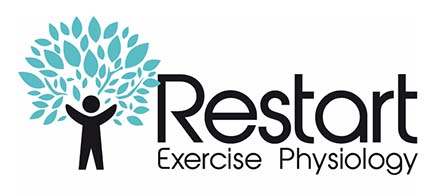If you are prone to neck stiffness, it’s likely that you’re often seeking the exercise equivalent of a ‘magic pill’ – a movement to reduce stiffness, improve range of movement, and provide sweet relief.
If you are prone to headaches stemming from neck stiffness, we understand how debilitating this can be. Restart Exercise Physiologist Tom Creevey has experienced ‘cervicogenic headaches’ (headaches stemming from upper-neck tightness and dysfunction) since his teenage years, and through his own experience and research is now managing his symptoms better than ever.
Now, coming back to that ‘magic pill’ exercise. I don’t want to dash your hopes but I doubt such an exercise exists. Stiffness of any joint throughout our body can be down to a great number of reasons, including lifestyle and environmental, and is often an exercise in problem solving.
However, through trial, error and vast amounts of research, Tom has discovered two exercises that provide relief in reducing neck stiffness, improving neck mobility, and reducing headache frequency and severity.
Research-based interventions
Research suggests that the most common causes of upper neck dysfunctions are whiplash associated trauma, and prolonged neck flexion or poor postures when seated and standing. We’ve all been there – scrolling on the phone for too long, jutting your head forward driving along the highway, or slouching into your sofa after a day at work. Making a habit of staying in these positions for too long will very likely lead to stiffness throughout the neck joints, neck-pain onset, and if you’re particularly unfortunate, headaches.
Unfortunately, we cannot prevent traumatic whiplash injuries, yet we can provide rehab measures when appropriate after the event. Our treatment may be in conjunction with that of a Chiropractor, Physiotherapist or other manual therapist. The exercises we prescribe is supported by the statement by Racicki and colleagues in their 2013 study that ‘utilising a combination of mobilisation, manipulation, and cervicogenic headache exercises like cervico-scapular strengthening exercises, are the most effective interventions’ for reducing headaches related to upper-neck dysfunction.
Tom’s recommended exercises
Prior to exercise #1 – Postural assessment
Firstly, it’s important to view your ‘static posture’ to determine the resting position of your neck and shoulders.
Does your head sit ahead of your shoulders? Are is one or both of your shoulders rounded forwards? Is there an excessive curve in your mid-back, or thoracic spine? Is there a rotation or tilt through your head or trunk?
This is where the trained eye of an Exercise Physiologist is important, to discover more on where imbalances, weaknesses, and tightness may be located.
Exercise #1 – Cervical SNAGs
The first exercise is a mobility exercises designed to mobilise the vertebrae of the upper-neck via a gentle towel-assisted gliding motion. It’s important that when doing this exercise you don’t force movement in either direction – simply guide the neck into rotation to where you feel a light stretch and a position where your body is ‘happy’ to go to.





Exercise #2 – Chin tucks + flexion on all fours
The second exercise is a neck strengthening exercise. Once we’ve improved your neck range of motion via the Cervical SNAGs, let’s strengthen the deep supporting muscles of the neck. This will assist in improving your ‘static posture’, keeping your head stacked over your shoulders and reducing the burden placed on the neck vertebrae and supporting muscles.




Perform 10 repetitions, maintaining a tucked chin position throughout.
To see Tom perform these exercises in video form, click here. Additionally, Tom recommends performing these exercises daily to see benefit.
Conclusion
As mentioned above, these exercises are unfortunately no ‘magic pill’, however we are confident that they will provide relief for neck stiffness, and reducing cervicogenic headaches.
Tom is a great practitioner to speak to and book in with regarding this due to his own experience with these conditions. Not only can he support you to master the above exercises, but he will provide a thorough screening to learn more on what else may be contributing to your unique pain and stiffness.
To make an appointment with Tom at either our Carseldine or Norman Park clinic, or to book with another team member at Restart, click here or phone 1300 899 757.
Luke

0 Comments